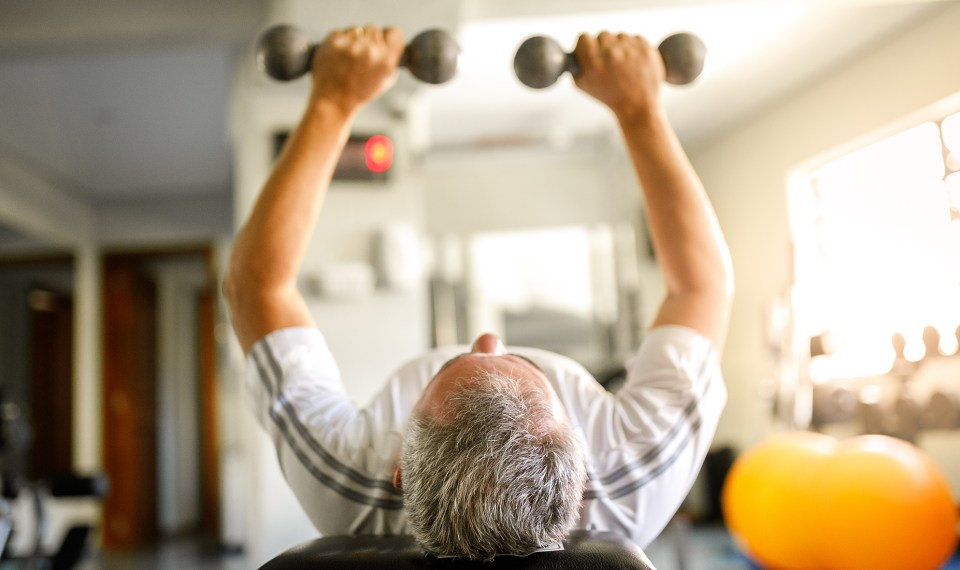Stop, so you don’t have to take your work home with you. That, in a nutshell, is the purpose of Encompass Health’s STOP program, according to Brett Hirt.
Hirt is the director of therapy operations at Encompass Health Deaconess Rehabilitation Hospital in Indiana. In 2012, his hospital was the first to pilot the Company’s safe mobility program, STOP – Stop, Think, Organize, Position. The program is divided into two parts; STOP 1 focuses on ergonomics and is for all employees, while STOP 2 is geared to clinicians, training them in a safe patient transfer protocol in an effort to reduce injuries while making these transfers. Though the latter may sound more patient focused, Hirt said it’s really about keeping employees safe and healthy.
“Nobody likes to take their work home with them,” Hirt said. “When you’re at work and you get injured, you are taking your work home with you. It’s not just for a day or an evening either. It could be for weeks or months or even a career. These principals we use in STOP 2 are to prevent you from taking your work, or in this case, an injury, home with you.”
Each year, Encompass Health hosts regional STOP 2 boot camps to train employees in the program.
“These will be the people who will go back and train at their hospital,” said Elizabeth Halkett, a STOP trainer and director of therapy for Encompass Health’s Southeast region. “They’ll be teaching the class at their hospital for therapy and nursing.”
During the two-day training program, participants learn the safe way to transfer patients using the proper equipment, and most importantly taking the time to assess the situation.
An investment in employees
While there is a nationwide movement to set standards for patient handling as STOP does, Lynne Lee, vice president of risk management for Encompass Health, said only a handful of states have passed legislation addressing it. Knowing just how strenuous transferring patients can be – Lee was a nurse – the STOP program was created with input from nursing and therapy to help prevent employee injury from handling, or mobilizing as Lee and Hirt prefer to call it.
Acknowledging the fact that healthcare employees are at a higher risk of injuries than most and that many of those strains and sprains that prevent clinicians from performing their work often occur while transferring a patient, the Company partnered with Medco Technology, a company that specializes in safe patient mobility solutions, to create the STOP 2 program.
It was first piloted in a handful of hospitals such as Encompass Health Deaconess, and then implemented companywide in 2014.
“Encompass Health has really been fantastic in recognizing that we’re in a high-risk industry,” said Chelsee Wood, a nurse manager at Encompass Health Rehabilitation Hospital of Colorado Springs and also a STOP program trainer. “The wear and tear of weeks and months of using poor body mechanics can add up overtime, and the unpredictable movement of a patient can end a career.”
STOP 2 requires clinicians to assess the patient’s movement with a 5-second mobility screening, determining the need for additional assistance or if mobility equipment is needed to make a safe transfer.
For too long, Wood said, many clinicians assumed that the heavy lifting of patients, even at the risk of injury, was a given in healthcare. She said the STOP 2 program is helping change that mentality at Encompass Health hospitals, prompting them to use the proper equipment — such as slide sheets and lifts — for more difficult patient transfers, as well as calling for assistance before attempting to make a difficult transfer.
“This program really spoke to me in that I didn’t realize I was getting into such a dangerous profession,” Wood said. “But there are tools out there to help. You wouldn’t change an IV without gloves, so why wouldn’t you use this equipment that could help protect you from an injury?”
How do you convince employees that injuries aren’t part of the job in healthcare? The best way to change that mindset is through training–lots of it.
Train and re-train
All new Encompass Health hospital employees are required to undergo three hours of STOP 2 training as part of orientation, but training doesn’t end there.
Each hospital has at least one STOP champion. These champions undergo extensive training and are the go-to people at each hospital for anything STOP related. Regional STOP champions conduct monthly calls with hospital trainers providing access to practical situations and best practices among colleagues.
Wood said the regional calls have been extremely helpful in seeing how other hospitals are tackling a problem she might be having at hers.
“Anybody can chime in and ask questions about things they may be struggling with or some of their hospital’s goals,” she said. “The more we’re talking about it and continuously providing education and supporting people and being present in tough transfer situations, the better.”
The content of this site is for informational purposes only and should not be taken as professional medical advice. Always seek the advice of your physician or other qualified healthcare provider with any questions you may have regarding any medical conditions or treatments.



